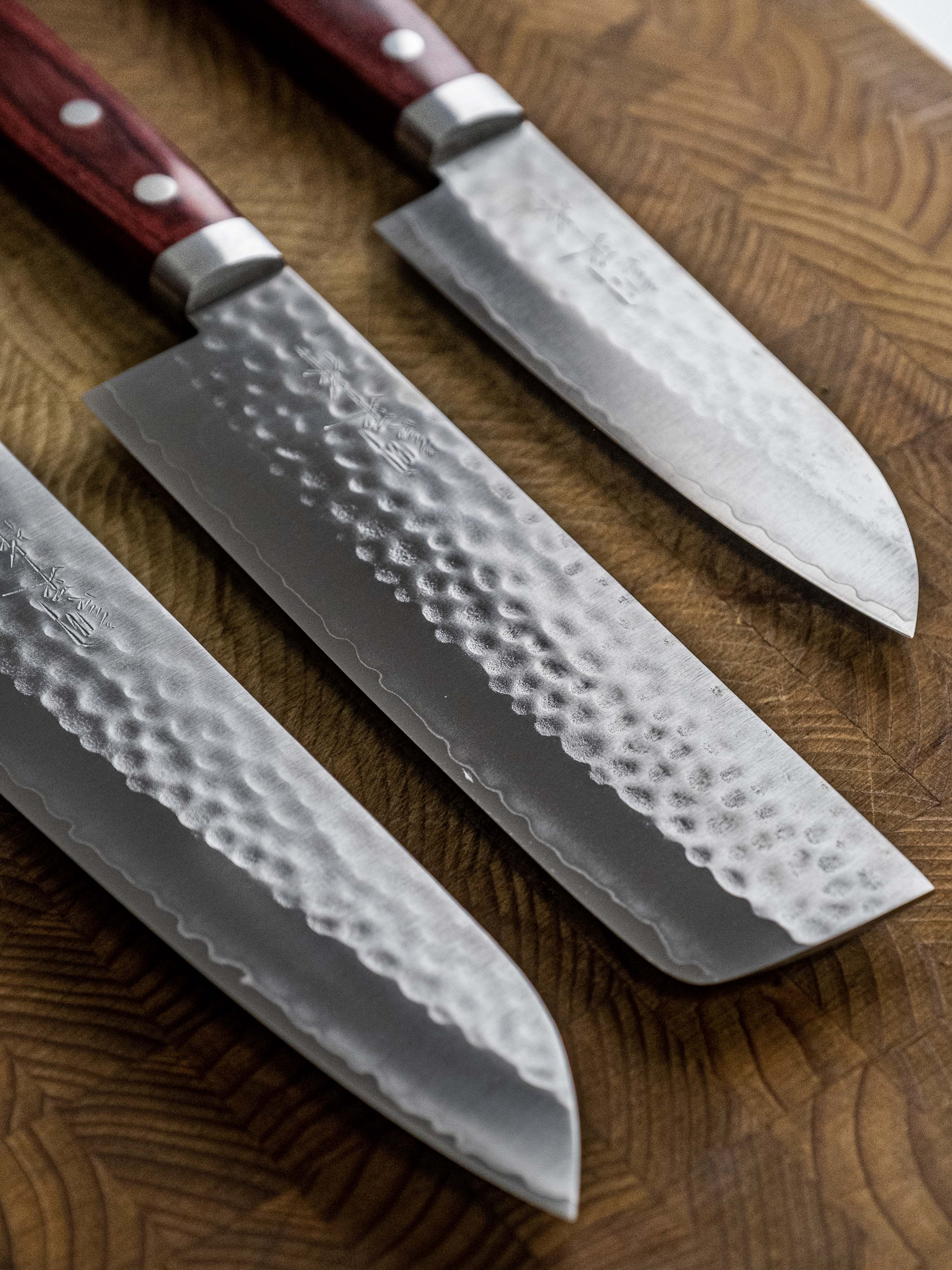Menu









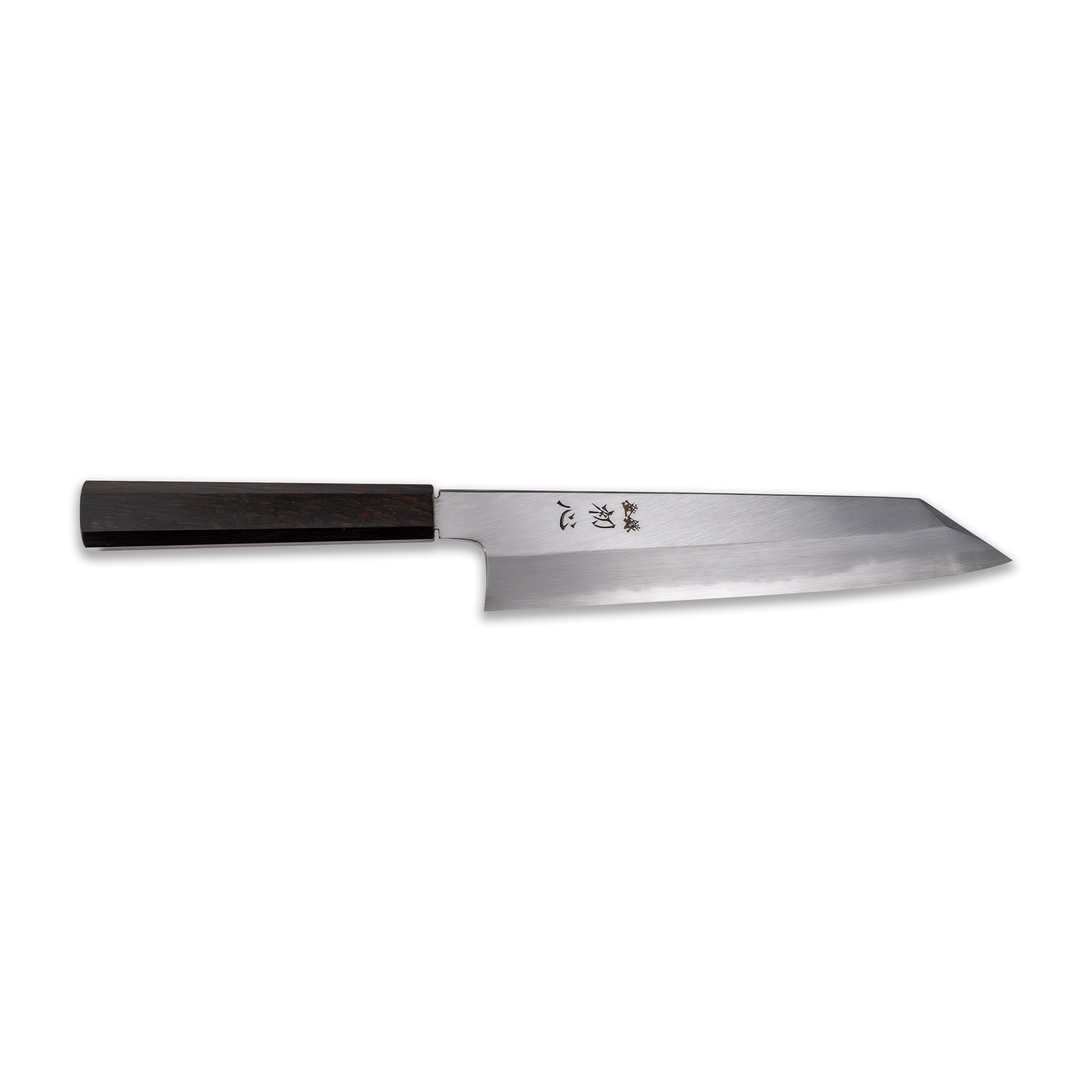
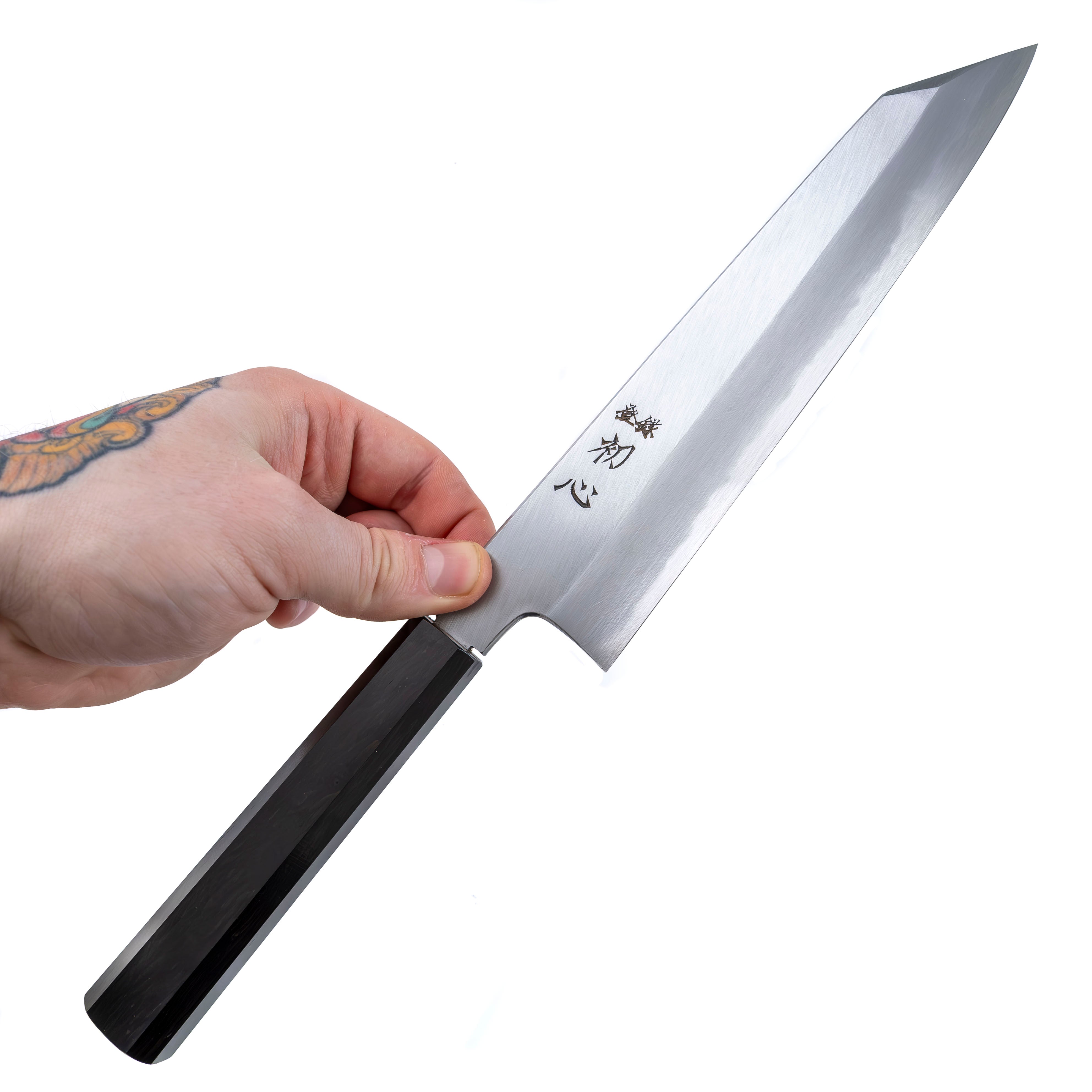
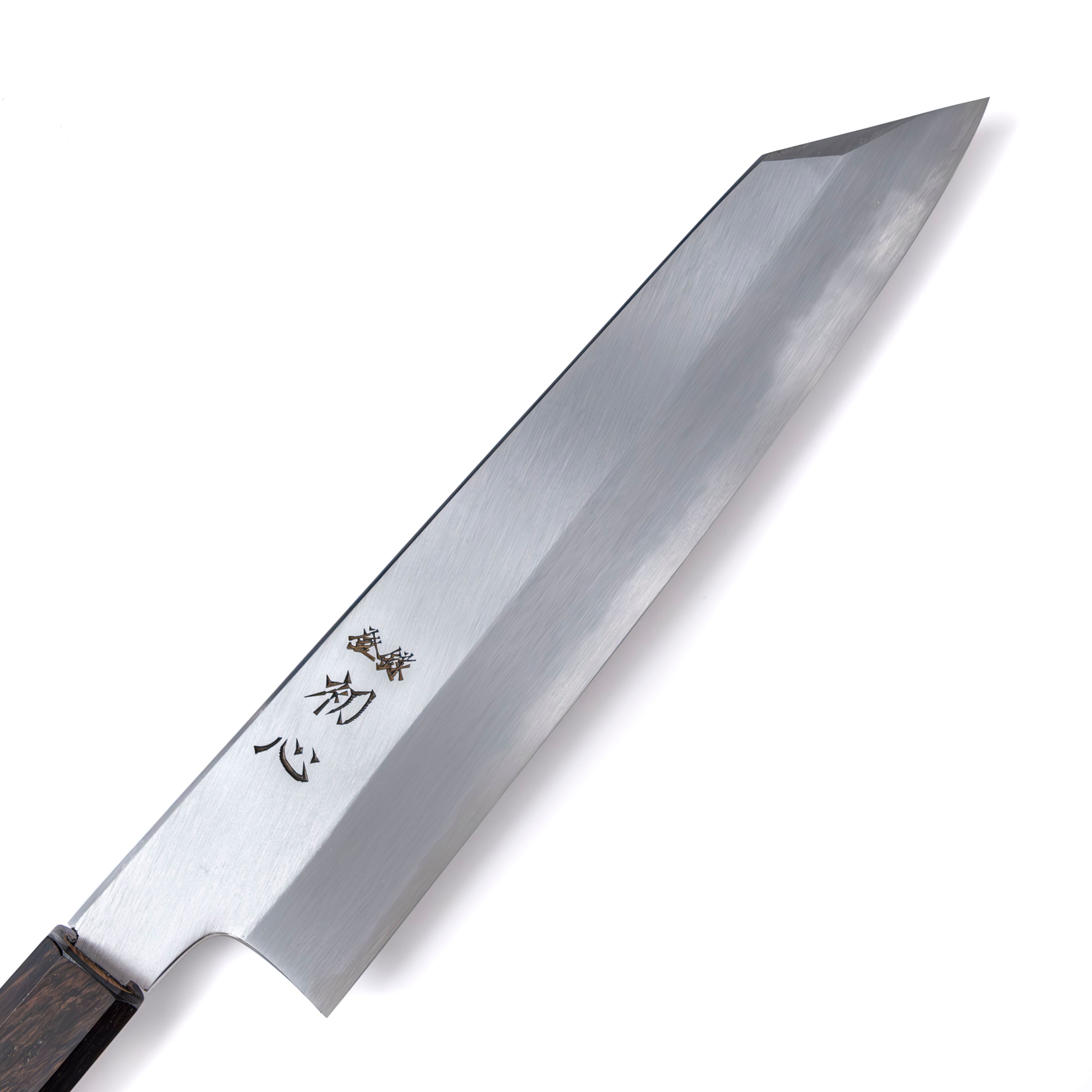
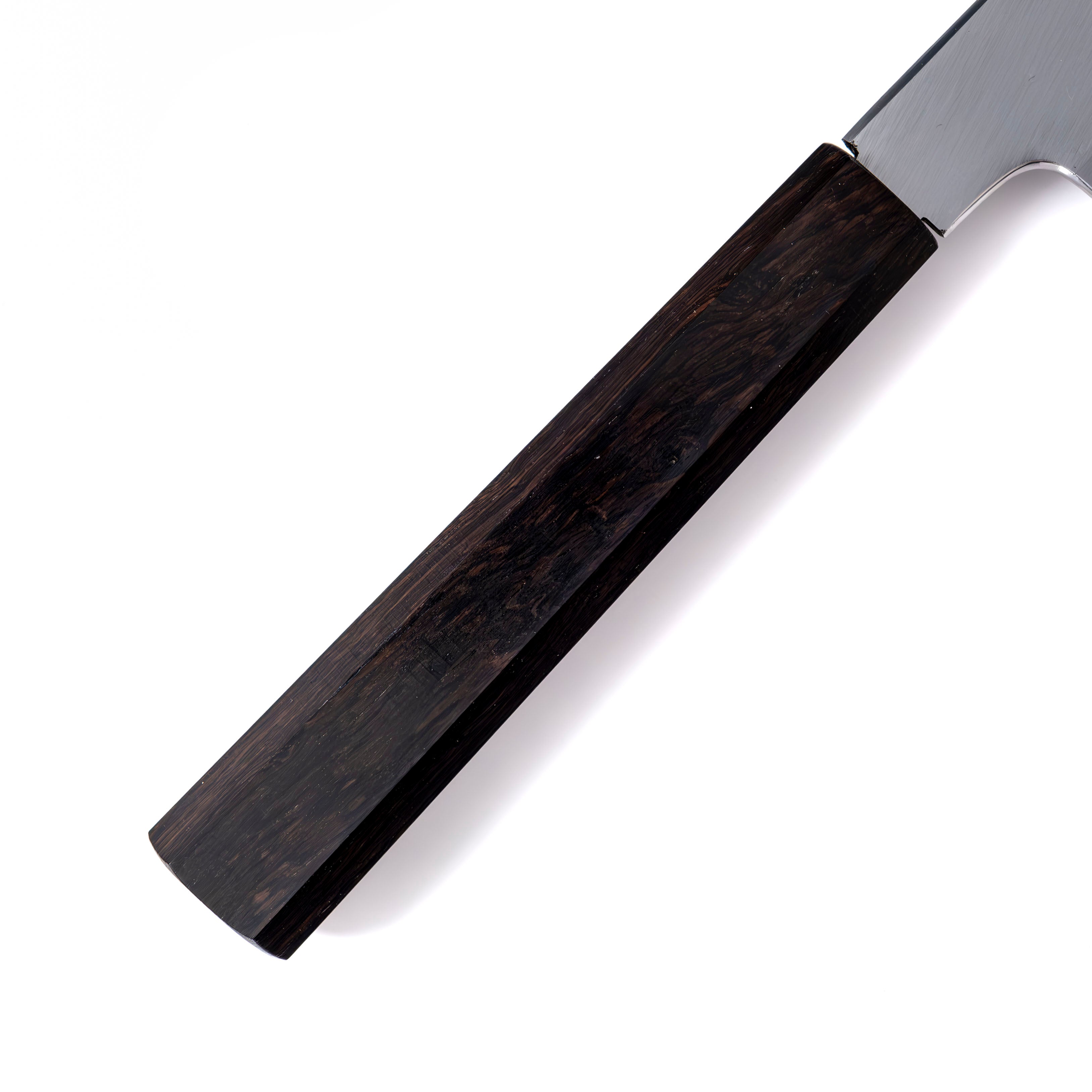
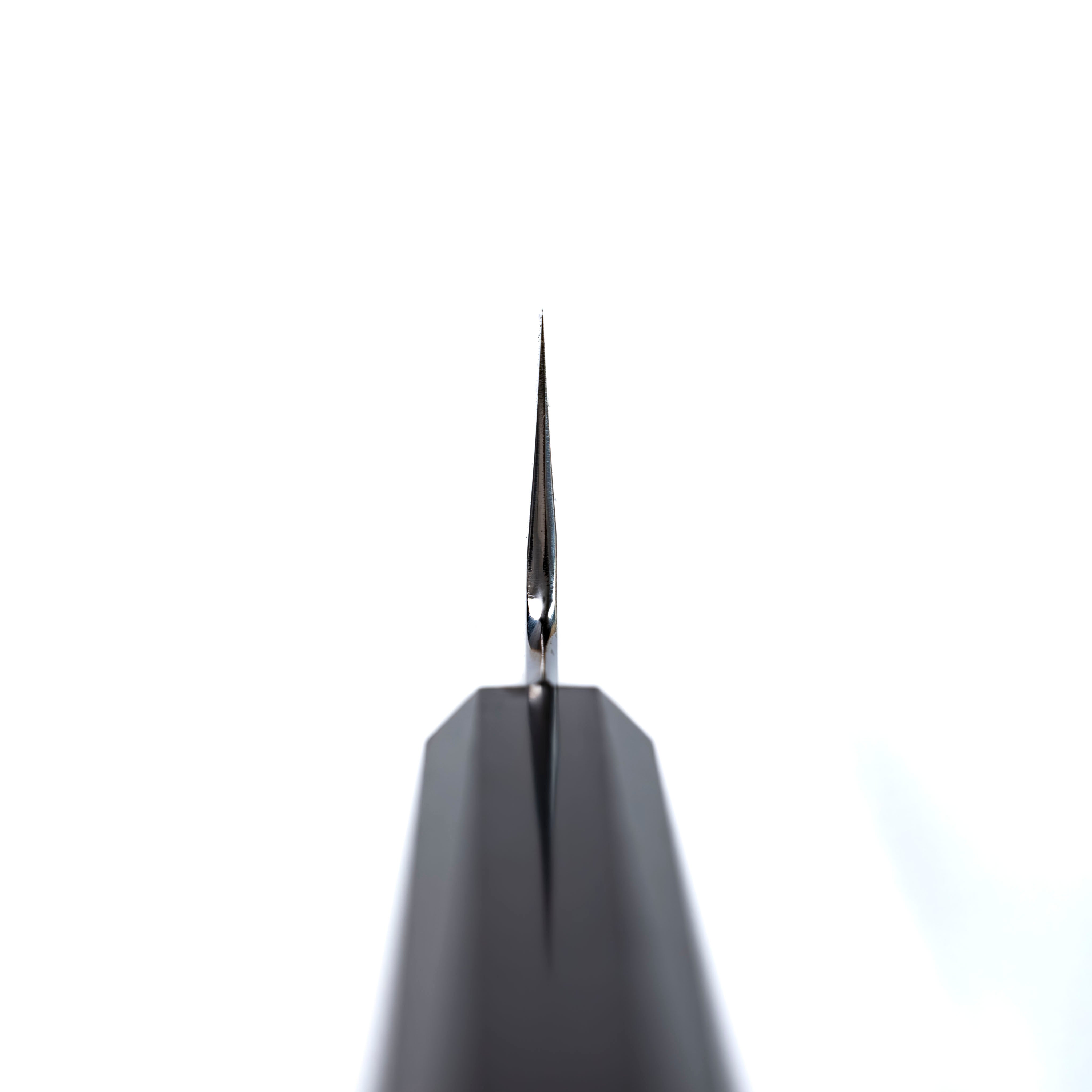
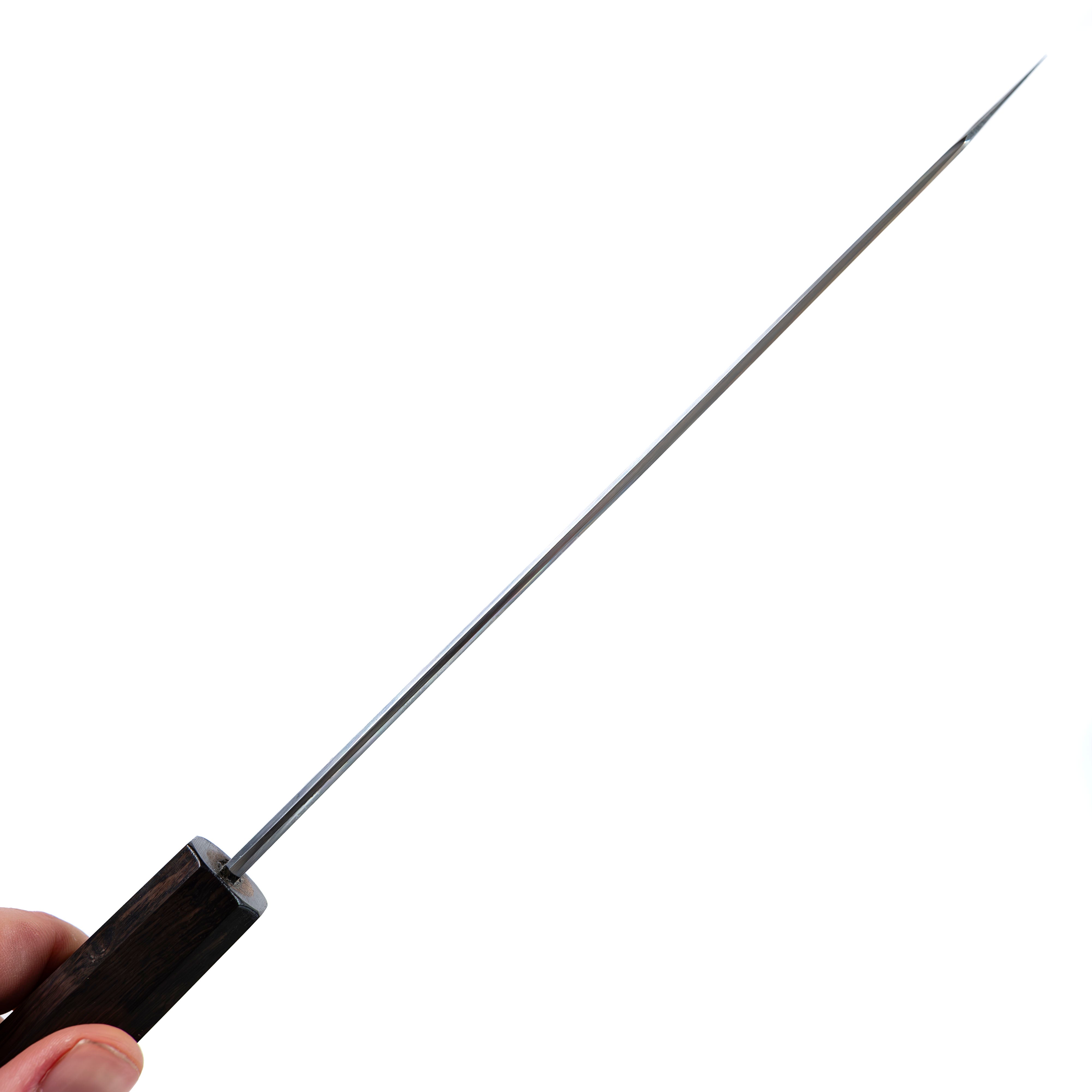
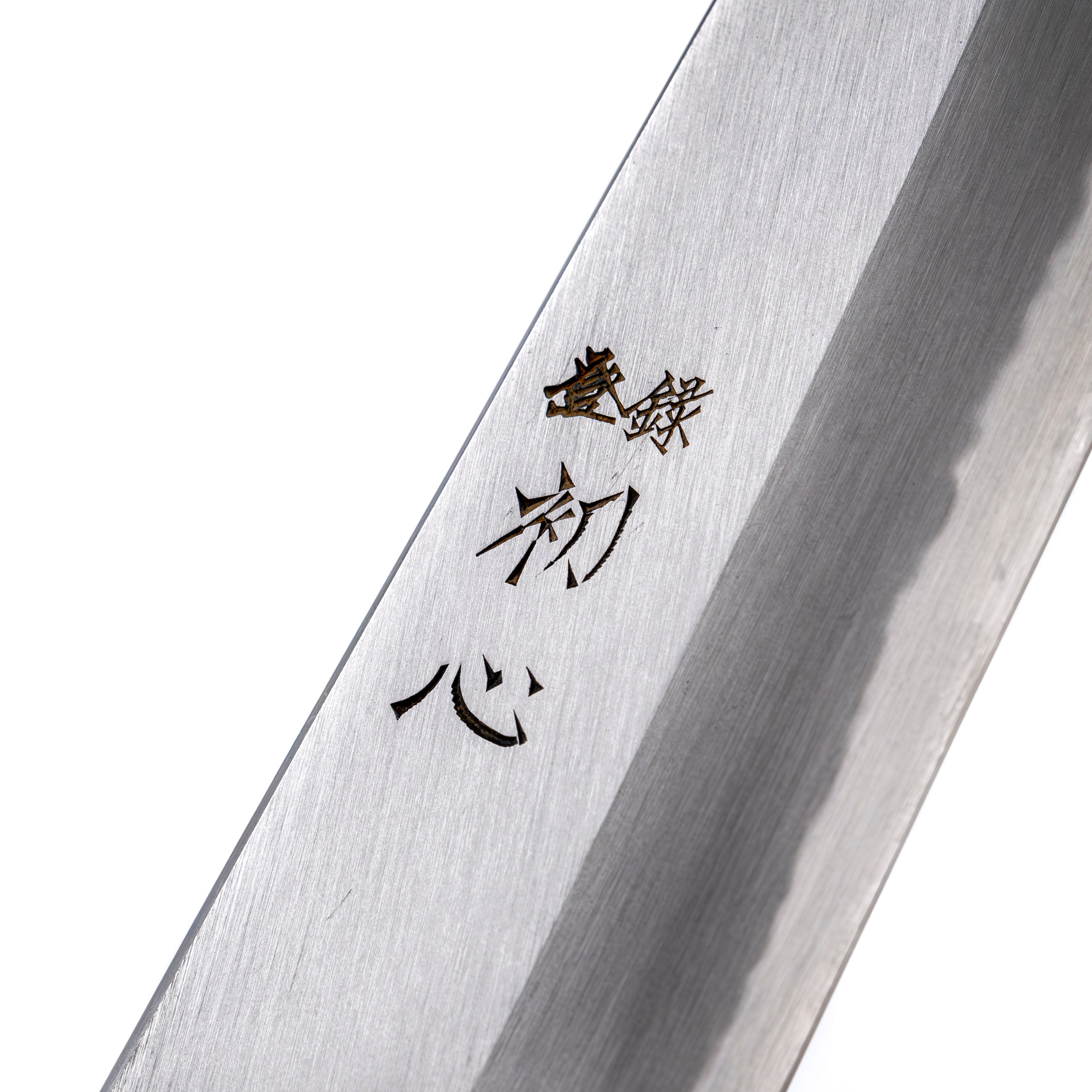
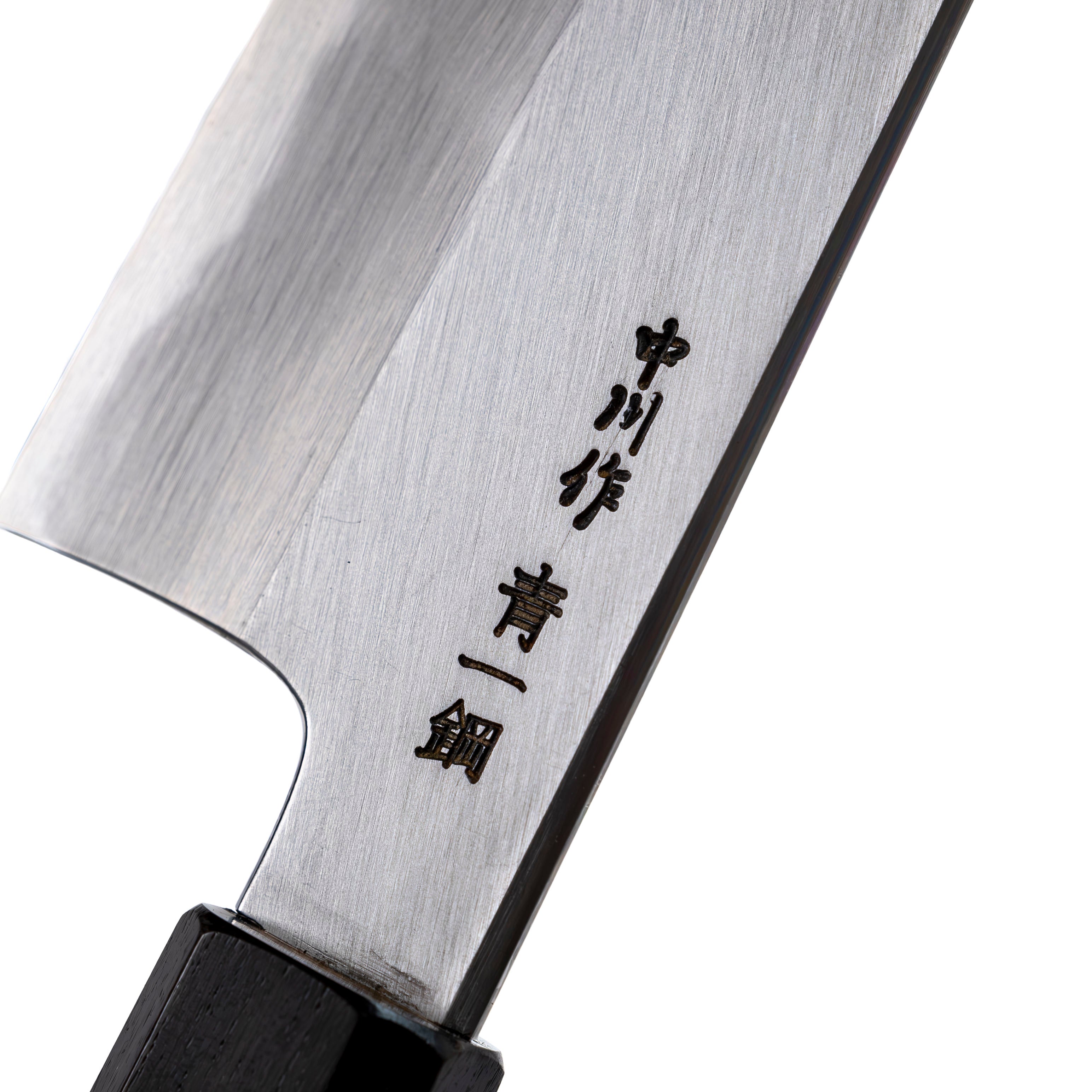
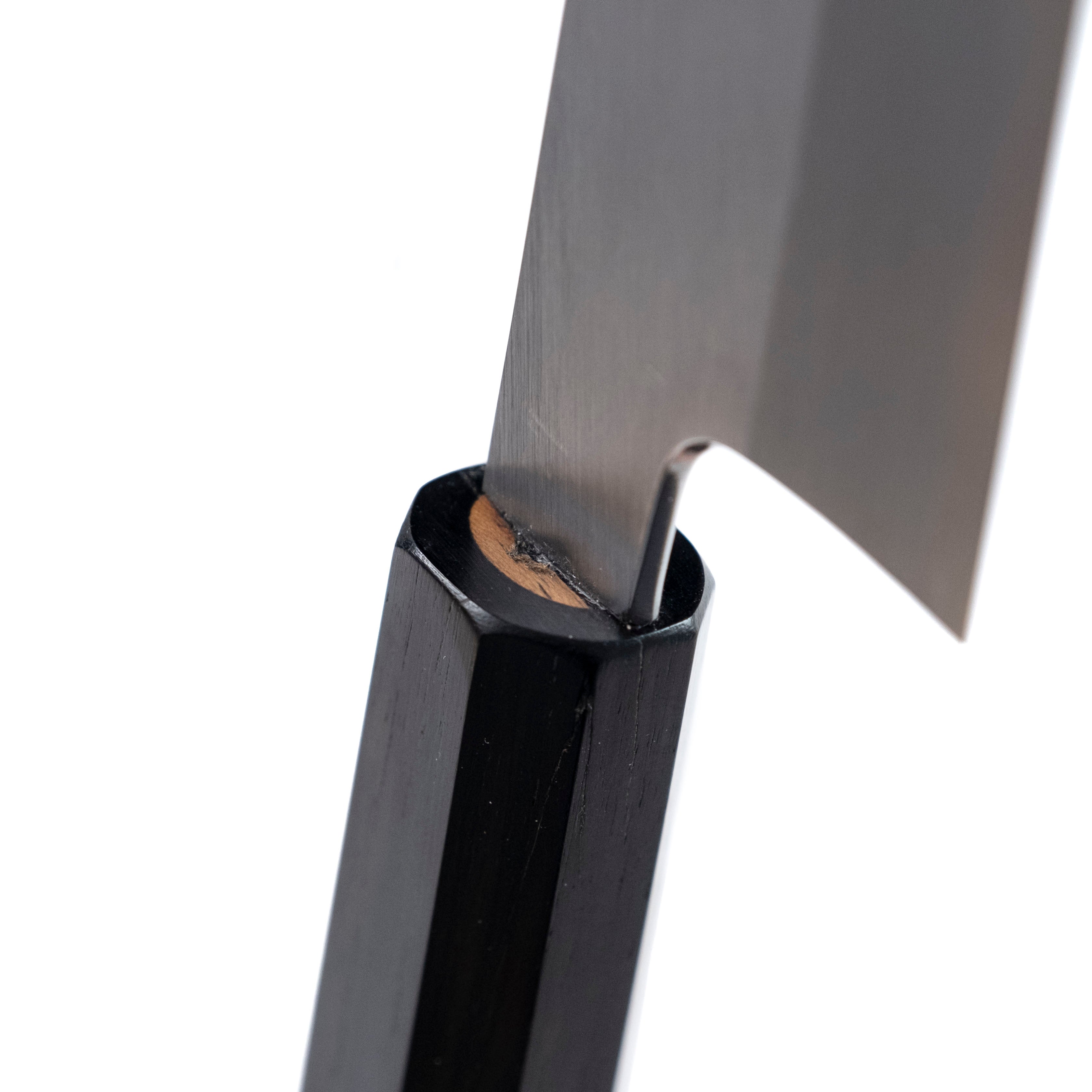
Nakagawa Satoshi B#1 Kiritsuke Gyuto 210 mm
- Sale price
- $548.95
- Regular price
- $609.95
- You save
- $61 (11%)
Taxes and shipping calculated at checkout
Out of stock
Product Information
| Blade Length | 210 mm |
| Total Length | 360 mm |
| Steel | Aogami (Blue #1) |
| Handle | Mono Ebony |
| Ferrule | N/A |
| Rockwell | 63-64 |
| Height Spine to heel | 43 mm |
| Width at Spine | 3.47 mm |
| Weight | 214 grams |
| Bevel |
Double (50/50) |
The Blacksmith
Satoshi Nakagawa is an up and coming blacksmith based out of Sakai City, Osaka Prefecture, Japan. Before launching his own workshop in 2021, Nakagawa-san trained under Kenichi Shiraki, who was a master craftsman, known for his Honyaki knives. Although Nakagawa-san works primarily with Ginsan, and Blue # 1 / 2, he has a wide breadth, given sixteen years of training at Shiraki hamono, he too, possesses the coveted skill of producing Honyaki knives, now under his own name. Nakagawa-san’s blades are characterized by their clearly defined bevels, thinness behind the edge, thin tip, nice balance/weight in hand, and smooth fit/finish (chamfered spine, smooth choil). These knives are quite versatile profile wise, with a nice flat spot, and a gentle curve towards the k-tip, making them great for precise detail work!
The Knife
The Kiritsuke is an all purpose knife geared more toward the professional than the home cook though it's a great option for home cooks who prefer a longer knife. This knife is double beveled and is therefore suitable for both right and left handed users but traditionally the Kiritsuke is single beveled and only the head chef is permitted to use one in traditional sushi restaurants.
Kiritsukes function much like a gyuto or chef's knife and can be used for basically any task. They are a great option for those who prefer to use an up and down, forward and backward chopping motion rather than a rocking motion due to the lack of curvature to the blade. This coupled with the K-tip (aka reverse tanto tip) make it a fantastic slicing knife as well, although the k-tip is much more delicate than a traditional curved tip. Typically, kiritsukes carry a flatter profile and are more suited to push/pull cutting style, as opposed to the rocking motion.
- This Knife is made from 3 layers of material; A layer of iron on each side protecting a layer of carbon steel at the core, in a process referred to as Sanmai or forge welding. Iron and carbon steel are both susceptible to rust and must be kept dry and clean at all time’s to avoid oxidation and discolouration.
- Simply wipe the knife with a damp cloth immediately after use.
- Wash with regular dish soap and warm water using a none abrasive sponge or cloth.
- Never put your knife in the dishwasher! The extreme heat will ruin the wooden handle.
- Highly acidic ingredients (Onions, Tomatoes, Citrus) Will cause rust and oxidation to happen faster, thus the user must ensure the knife is wiped clean immediately after working with such an ingredient.
- Should any rust form it can be removed using a rust eraser or a mixture of Baking soda and water to simply scrub it clean.
- Avoid Bones, Frozen foods, nuts and hard candies or anything other than fruits, vegetables and proteins.
Recommended for You
- Choosing a selection results in a full page refresh.
SHOP
IN-STORE CLASSES/SERVICES
STORE POLICIES
CONTACT US
142 JAMES ST. S HAMILTON ON L8P3A2
MONDAY - SATURDAY :
11 AM to 6 PM
SUNDAY : CLOSED
195 NORSEMAN ST UNIT 14 ETOBICOKE ON M8Z0E9
MONDAY - SATURDAY :
11 AM to 6 PM
SUNDAY : CLOSED
Country/region
© 2025, SHARP Knife Shop Powered by Shopify
